 |
 |
 |
Bactria and Sogdiana,
which prospered along the Oxus River in Central Asia, were known for supplying
precious metals and stones as well as for bridging the ancient
civilizations of Mesopotamia and the Indus Valley. Since Alexander’s
expedition east, these areas have been important crossroads in bringing
together the cultures of the Mediterranean, West Asia, India, and
Scythia. The Sogdians, who played a pivotal role in Silk Road trade at
the beginning of the Medieval Ages, introduced these unique Central
Asian cultures to the East and influenced the creation of the
cosmopolitan milieu of the Tang dynasty.
This exhibition highlights five ancient Bactrian and Sogdian masterpieces from the Tajikistan National Museum of Antiquities and presents over a hundred pieces from the Bronze Age of Central Asia to the Islamic period, covering a period of more than four thousand years. We hope our museum visitors will sense the universal longing for happiness through the undercurrent of the broad cultural exchanges that took place.
This exhibition highlights five ancient Bactrian and Sogdian masterpieces from the Tajikistan National Museum of Antiquities and presents over a hundred pieces from the Bronze Age of Central Asia to the Islamic period, covering a period of more than four thousand years. We hope our museum visitors will sense the universal longing for happiness through the undercurrent of the broad cultural exchanges that took place.
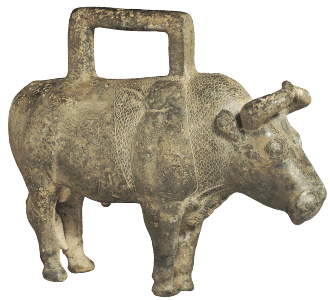
Emblem of Power
Bactria, which prospered from trading its resources, made its symbol of
authority beautiful standard measuring weights. This approximately
ten-kilogram weight measured out to about 12,000 units in its day.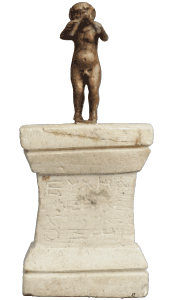

Central Asian Divinity
in the Form of Greek River Deity
From the Oxus temple ruins in Takhti-Sangin, Tajikistan was
discovered this statuette modeled after the Greek river deity
Marsyas of Asia Minor. According to the inscription, the image was
offered to the god Oxus. It is thought that he is a manifestation of
a Zoroastrian river deity. He reflects the spiritual world of the
Greek, who migrated to Central Asia after Alexander’s conquest of
Persia.in the Form of Greek River Deity
A Welcome to Paradise
A decorative plaque of mythical Greek hippocampus was found in
Takhti-Sangin. It was believed that one rode on the hippocampus
across the ocean to a paradise after death. Such Greek images of a
heavenly afterlife later influenced Buddhist ideas of paradise.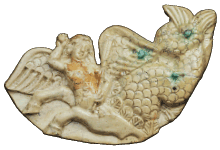

The Path Opened by Heavenly Horses
Emperor Wu of the Han dynasty (206 B.C.–220 A.D.) dispatched envoys
on a number of occasions to seek the heavenly horses of Central
Asia. The gold horses sent as gifts during these missions may have
been similar to this statuette because it weighs almost exactly as
the measurement one jun (approximately 7 kg at that time). These
emissary groups represented the beginning of the caravans that
traversed the oasis route.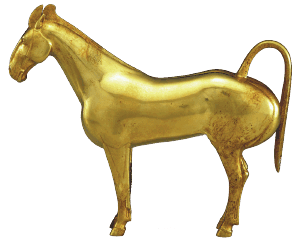

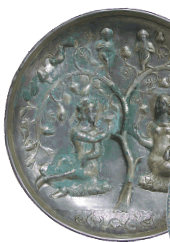 |
 |
 |
|
|
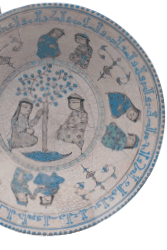 |
|
|||
 |
|
|||
 |
 |
|
||
|
|
|
|||
|
|
|
|
|
|
Cultural Inheritances
by Islam
The images from Iranian mythology of the Tree of Life and the ocean from
which it grows, influenced designs of paradise favored by the Central
Asians of Sassanian Persia. This tradition was also inherited in the
Islamic period.by Islam

Organized by MIHO MUSEUM and Kyoto Shimbun Co., Ltd.
With the cooperation of the National Museum of Antiquities of Tajikistan
Supported by Shiga Prefecture, Shiga Prefectural Board of Education, NHK Broadcasting Otsu Office, and Biwako Broadcasting Co., Ltd.
With the cooperation of the National Museum of Antiquities of Tajikistan
Supported by Shiga Prefecture, Shiga Prefectural Board of Education, NHK Broadcasting Otsu Office, and Biwako Broadcasting Co., Ltd.